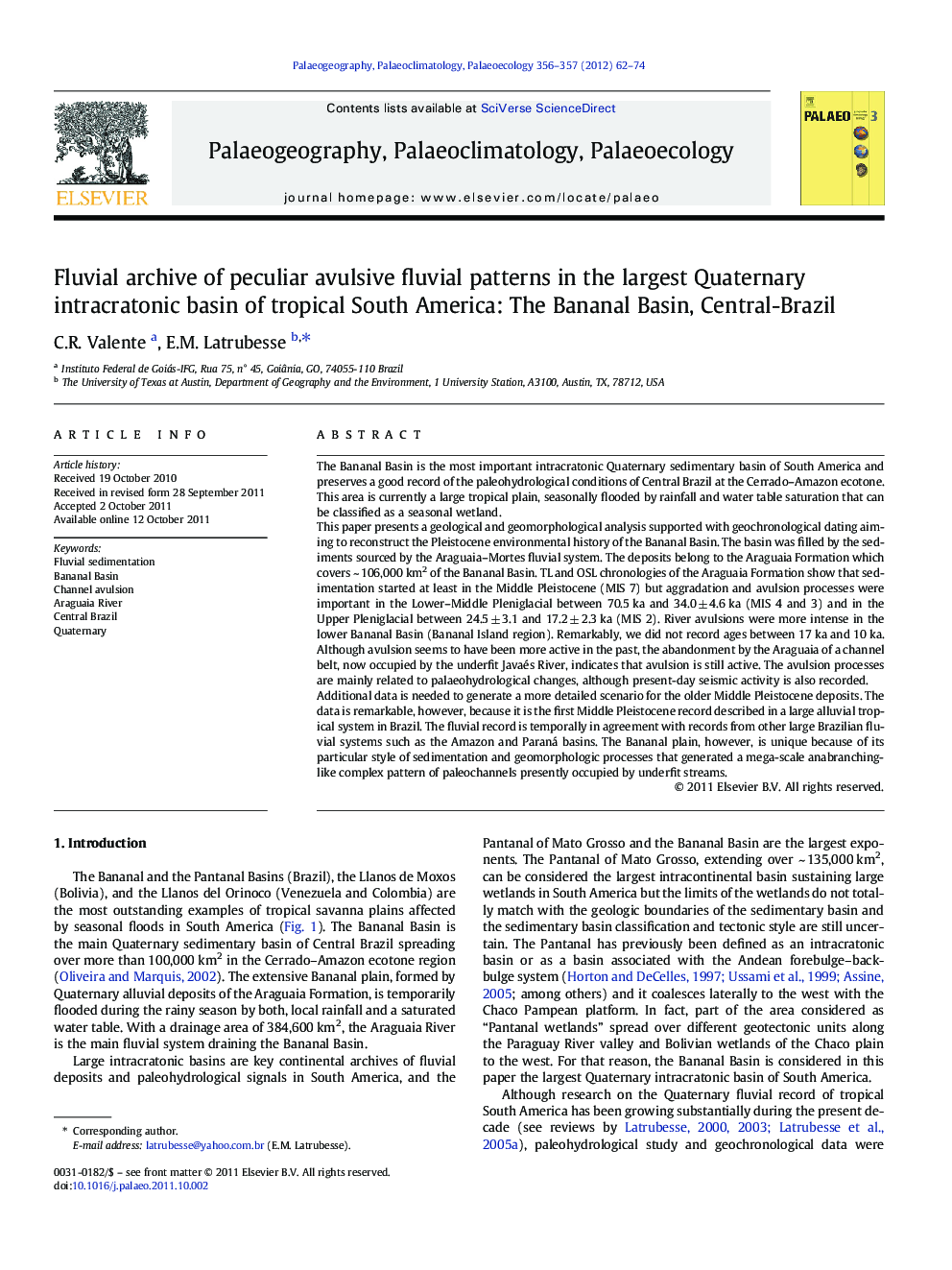| کد مقاله | کد نشریه | سال انتشار | مقاله انگلیسی | نسخه تمام متن |
|---|---|---|---|---|
| 4466808 | 1622223 | 2012 | 13 صفحه PDF | دانلود رایگان |

The Bananal Basin is the most important intracratonic Quaternary sedimentary basin of South America and preserves a good record of the paleohydrological conditions of Central Brazil at the Cerrado–Amazon ecotone. This area is currently a large tropical plain, seasonally flooded by rainfall and water table saturation that can be classified as a seasonal wetland.This paper presents a geological and geomorphological analysis supported with geochronological dating aiming to reconstruct the Pleistocene environmental history of the Bananal Basin. The basin was filled by the sediments sourced by the Araguaia–Mortes fluvial system. The deposits belong to the Araguaia Formation which covers ~ 106,000 km2 of the Bananal Basin. TL and OSL chronologies of the Araguaia Formation show that sedimentation started at least in the Middle Pleistocene (MIS 7) but aggradation and avulsion processes were important in the Lower–Middle Pleniglacial between 70.5 ka and 34.0 ± 4.6 ka (MIS 4 and 3) and in the Upper Pleniglacial between 24.5 ± 3.1 and 17.2 ± 2.3 ka (MIS 2). River avulsions were more intense in the lower Bananal Basin (Bananal Island region). Remarkably, we did not record ages between 17 ka and 10 ka. Although avulsion seems to have been more active in the past, the abandonment by the Araguaia of a channel belt, now occupied by the underfit Javaés River, indicates that avulsion is still active. The avulsion processes are mainly related to palaeohydrological changes, although present-day seismic activity is also recorded.Additional data is needed to generate a more detailed scenario for the older Middle Pleistocene deposits. The data is remarkable, however, because it is the first Middle Pleistocene record described in a large alluvial tropical system in Brazil. The fluvial record is temporally in agreement with records from other large Brazilian fluvial systems such as the Amazon and Paraná basins. The Bananal plain, however, is unique because of its particular style of sedimentation and geomorphologic processes that generated a mega-scale anabranching-like complex pattern of paleochannels presently occupied by underfit streams.
► We present results on the Bananal basin located at the Cerrado-Amazon ecotone.
► It is the largest Quaternary intracratonic basin of South America.
► The fluvial sediments spreading on more 106,000 km2, belong to the Araguaia Formation.
► The Araguaia Formation ranges from the Middle to the Late Pleistocene (MIS7 to MIS2).
► Avulsion was a main mechanism generating a mega-scale anabranching pattern.
Journal: Palaeogeography, Palaeoclimatology, Palaeoecology - Volumes 356–357, 15 October 2012, Pages 62–74